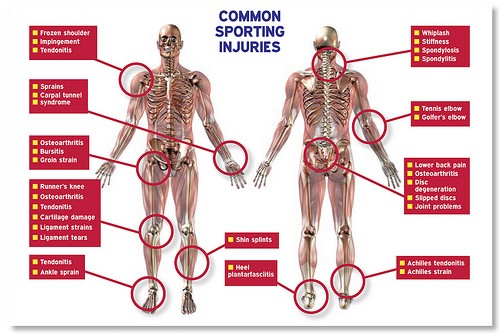
Common joint injuries
As stated earlier, research regarding strengthening of joints and supporting cartilaginous tissue is almost 'non-existent'. On the contrary, how skeletal muscles work, recover from routines and what can be done to increase muscular strength and power, avoid muscle injuries and indeed hasten recovery times (either from the stress of workout or an injury) has been perfected to the point of being a major branch of science. Add to that, the plethora of supplement focussing towards optimizing muscle function - caffeine, pre or post-workout drinks, whey protein and others. However, when it comes to joints,very little is known. Also, there are just a few joint formulae on the market, all of them containing almost the same ingredients. In a nutshell - we do not know much about the way our joints function. This despite the fact that joints are 'the weakest link' in our 'training anatomy'. COMMON JOINT INJURIES Joint injuries can be of numerous varieties. A broad classification can be: TENDINITIS/ TENDINOSUS Tendon are the rod-like structures which connect muscles to bones. Inflammation of these structures due to overuse leads to tendinitis. Pain and compromised joint movement result. BURSITIS Bursae are small fluid-filled sacs placed at strategic locations where there...
As stated earlier, research regarding strengthening of joints and supporting cartilaginous tissue is almost 'non-existent'. On the contrary, how skeletal muscles work, recover from routines and what can be done to increase muscular strength and power, avoid muscle injuries and indeed hasten recovery times (either from the stress of workout or an injury) has been perfected to the point of being a major branch of science. Add to that, the plethora of supplement focussing towards optimizing muscle function - caffeine, pre or post-workout drinks, whey protein and others. However, when it comes to joints,very little is known. Also, there are just a few joint formulae on the market, all of them containing almost the same ingredients. In a nutshell - we do not know much about the way our joints function. This despite the fact that joints are 'the weakest link' in our 'training anatomy'. COMMON JOINT INJURIES Joint injuries can be of numerous varieties. A broad classification can be: TENDINITIS/ TENDINOSUS Tendon are the rod-like structures which connect muscles to bones. Inflammation of these structures due to overuse leads to tendinitis. Pain and compromised joint movement result. BURSITIS Bursae are small fluid-filled sacs placed at strategic locations where there is likelihood of friction occurring - such as a tendon passing over a bony prominence. Chronic stresses can lead to inflammation of these bursae resulting in a condition called bursitis. Clinically, bursitis presents with pain and reduction in joint function. LIGAMENT INJURIES Sudden external impact on joint (such as lateral knock on the knee during a football tackle) or wrong biomechanics - over a period of time - may lead to ligament injuries. These can range from minor ligament strains to partial or complete ligament tears. As you may have guessed, ligament injuries have the ability to leave a residual component of joint laxity and decreased joint stability. ARTHRITIDES Osteoarthritis is the commonest form of arthritis - wear and tear of joint surfaces and cartilage with pain are the characteristic findings. Although, arthritis is an age-related phenomenon; advancing age increases your chances of suffering from this condition (Primary Osteoarthritis) - repeated joint stress can put young athletes in harm's way as well. The usual underlying cause of most cases of arthritis is inflammation or trauma. Joint surfaces of the bones, cartilage and ligaments can get involved in the inflammatory process causing swelling, pain and reduction in joint function. The good news is that all these conditions can be effectively dealt with by knowing how to 'destress your joints'. Let us know more....
- Important notification about information and brand names used in this slideshow!
- Photo courtesy of sportEX journals by Flickr : www.flickr.com/photos/sportex/4253607972/
- www.wikihow.com/Protect-Joints-During-Exercise
- http://www.sparkpeople.com/resource/fitness_articles.asp?id=1842
- http://pikesville.patch.com/groups/linda-howards-blog/p/bp--protect-your-joints-nutrition-and-post-workout-jo3cc27a2bff
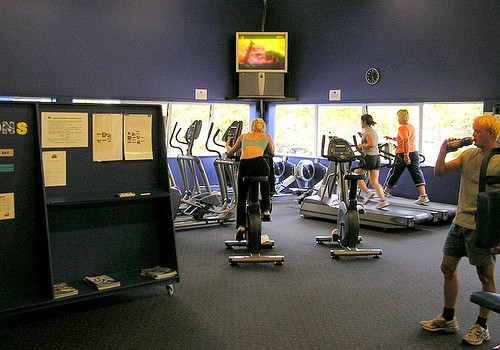
Common mistakes that lead to joint injury
'Too much too soon' is usually to blame when it comes to joint injuries. In seasoned athletes or those who have been regular 'gym rats', absence of 1. warm up-stretching sessions, 2. proper movement patterns (biomechanics), 3. ample recovery between exercise sessions, and 4. proper diet can lead to joint problems We will cover these topics in the slides that follow.
- Important notification about information and brand names used in this slideshow!
- Photo courtesy of Keith Davenport by Flickr : www.flickr.com/photos/sirwiseowl/189691792/
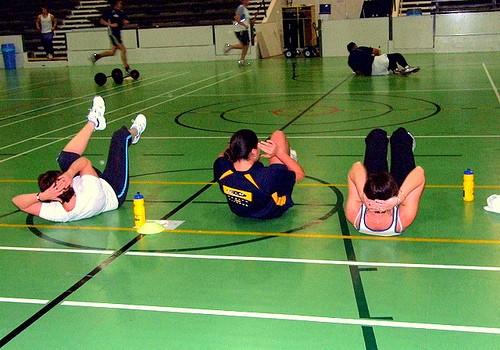
Warm up before exercise - Always!
The importance of warming-up can never be overstressed! Brief cardio movements like skipping or a few minutes on the rower followed by ballistic stretching should do the trick. These maneuvers will get your body temperature up, get blood flowing and more importantly, increase the secretion of joint fluid. This fluid - called the synovial fluid - plays an important role in causing lubrication - thereby, reducing friction, between the joint surfaces of bones, ligaments and other structures within the joint. Warm-up and stretching sessions also help in preparing the athletes mentally for the task at hand. Exercising without a proper warm-up can, on the other hand, place undue stress on the 'cold joints'. In the long run, 'exercising cold' is a sure recipe for disaster.
- Important notification about information and brand names used in this slideshow!
- Photo courtesy of Keith Davenport by Flickr : www.flickr.com/photos/sirwiseowl/780194094/

Gradually build exercise regimen
As stated earlier, 'too much too soon', is a sure recipe for joint injuries. Gradually building up exercise intensity as well as poundage will help joint and supporting structures to get used to the workload. Too high volume of training - especially associated with resistance training such as high reps and high sets - will increase the likelihood of joint problems. This is especially true with multi-jointed, compound exercise movements like squats and deadlifts.
- Important notification about information and brand names used in this slideshow!
- Photo courtesy of Joanna June by Flickr : www.flickr.com/photos/67691014@N06/7345748806/
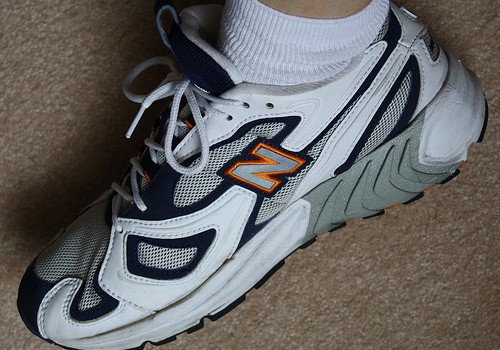
Wear the right footwear
The importance of wearing the 'right footwear for your sport' cannot be overstressed. While cushioned soles may better serve the purpose if you are planning to run for miles on a hard surface, flat shoes are definitely better for a plyometric workout. Similarly, a boxercise or a boxing session will also need flat shoes. Likewise, a weightlifting or a squatting session will not be so fruitful if you don a pair of cushioned running shoes - there is no denying that nothing can replace a pair of 'lifting shoes' when it comes to squatting. In a nutshell - wear footwear that best compliments the kind of training you'll be doing. In addition to increasing the efficiency of the effort that you put in, the right kind of footwear will also reduce the chances of injury. Weightlifting shoes, for instance will keep your ankles stable and avoid any undue pronation or 'buckling in' at the ankles. This will avoid 'bad movement patterns' and avoid injuries - both acute and long-term ones. So, if you have been using an 'all-purpose' shoe for most of your physical activity, its time to rethink the strategy. Get the right footwear and see your exercise sessions...
The importance of wearing the 'right footwear for your sport' cannot be overstressed. While cushioned soles may better serve the purpose if you are planning to run for miles on a hard surface, flat shoes are definitely better for a plyometric workout. Similarly, a boxercise or a boxing session will also need flat shoes. Likewise, a weightlifting or a squatting session will not be so fruitful if you don a pair of cushioned running shoes - there is no denying that nothing can replace a pair of 'lifting shoes' when it comes to squatting. In a nutshell - wear footwear that best compliments the kind of training you'll be doing. In addition to increasing the efficiency of the effort that you put in, the right kind of footwear will also reduce the chances of injury. Weightlifting shoes, for instance will keep your ankles stable and avoid any undue pronation or 'buckling in' at the ankles. This will avoid 'bad movement patterns' and avoid injuries - both acute and long-term ones. So, if you have been using an 'all-purpose' shoe for most of your physical activity, its time to rethink the strategy. Get the right footwear and see your exercise sessions become more efficient while saving you from injuries.
- Important notification about information and brand names used in this slideshow!
- Photo courtesy of Mr. T in DC by Flickr : www.flickr.com/photos/mr_t_in_dc/2585186921/
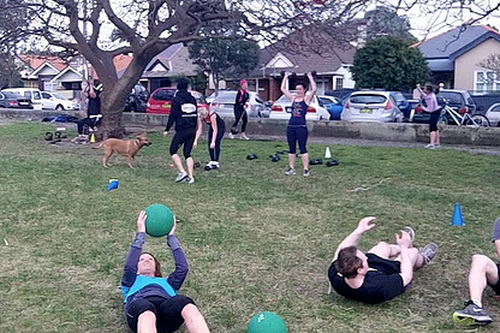
Avoid hard surfaces if it hurts
Hard surfaces can cause a lot of problems - especially in activities like distance running. All that incessant banging can lead to foot, ankle, knee and even back injuries. Fast bowlers suffer far more foot injuries in Australia where cricket pitches are generally harder compared to the rest of the world. Having said that, it is a misconception that 'hard surfaces are always bad'. Sports which require short, brutal bursts of movements are better off practised on hard surfaces. As stated earlier, plyometric exercises, Olympic lifting, strength training, sprinting and jumping will all require harder surfaces. Having said that, if any of the above activities cause knee or ankle pain, it is time to look at your movement patterns. Improving technique will take care of a lot of cases of joint pain. However, if pain still persists, get some investigations done! If you doc comes up with a diagnosis, it's time to back off from 'hard surface sessions' until you sort out the problem.
- Important notification about information and brand names used in this slideshow!
- Photo courtesy of Dangerously Fit by Flickr : www.flickr.com/photos/dangerouslyfit/7770514386/
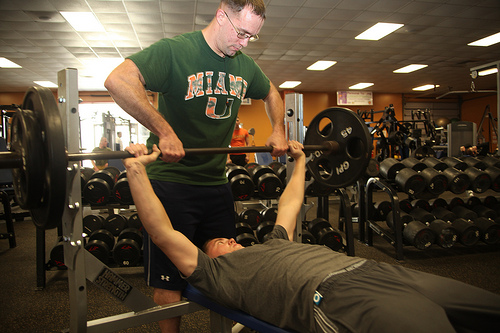
'High-volume' Training
Over the years, there have been a number of proponents of 'high-volume' resistance training - Arnold was famous for this 'split routine' and almost 90 sets per muscle group per week. However, this kind of training, some believe is beneficial only to those that are genetically gifted or 'steroid-enhanced' (1). For natural bodybuilders or those training for other sports, 'high volume' training will be more detrimental than beneficial to performance! 'High-volume' training is not only catabolic in nature (breaks down muscle tissue) but can also increase your chances of joint and cartilage injury. This is owing to the extra stress that the increased number of sets and reps will put on your joints. Furthermore, 'high-volume' can also lead to 'burnout' or 'overtraining syndrome'. In a nutshell, to keep your joints in top-shape, high-volume training is best avoided.
- Important notification about information and brand names used in this slideshow!
- Photo courtesy of CherryPoint by Flickr : www.flickr.com/photos/mcas_cherry_point/6714751531/
- (1) http://muscleandbrawn.com/high-volume-training/

Use proper technique
Improving technique is a guaranteed way to reduce stress on your joints. This is so because improved technique results in better biomechanics. Better joint angles during movements using heavy weights reduces friction and shear forces around the joints. Hence, the more time you spent in bettering your technique, the better it is for your joints. Proper technique also improves efficiency of movements - you might end up lifting more weight and in a much safer way!
- Important notification about information and brand names used in this slideshow!
- Photo courtesy of Anthony C by Flickr : www.flickr.com/photos/aandaphotography/8643124485/
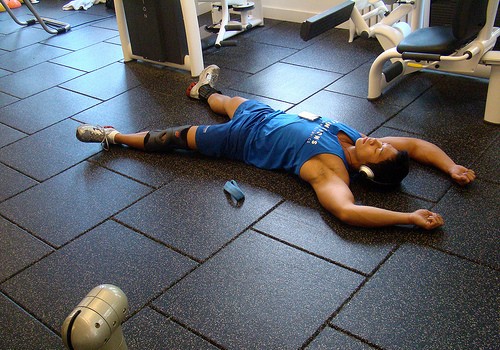
Cool-down
A cool-down at the end of the exercise is almost as important as warming-up at the beginning. Cool-downs will get your heart rate and blood pressure down to normal before you hit the shower. More importantly, cool-downs have the ability to take stresses away from your muscles, cartilage and joints. Undue and unwanted stiffness (not to be confused with muscle tone or muscle pump) over time can lead to stiffening and shortening of muscles. And, as we all know stiff muscles are more likely to cause injury. Hence, the importance of a 'cool-down'. Other techniques used for a 'cool-down/recovery' are a power shower (alternate hot and cold streams of water running down your spine or entire body), cold shower, steam or a sauna. The latest trend is an ice-bath after an intense workout - it does seem to relieve the stress of training and enhance recovery.
- Important notification about information and brand names used in this slideshow!
- Photo courtesy of istolethetv by Flickr : www.flickr.com/photos/istolethetv/3484457206/
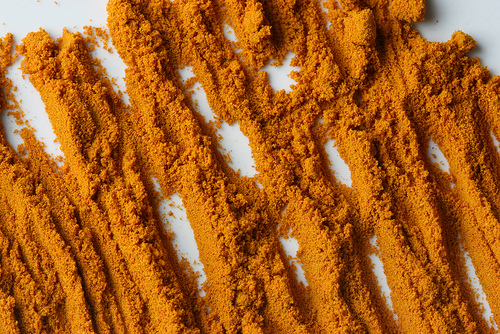
Post-Workout Turmeric Tea for Joint Health
Turmeric tea is increasingly being suggested as a natural 'joint-protection' formula. Turmeric, on account of its anti-inflammatory' properties, seems to be good for joints. In combination with other anti-inflammatory ingredients like ginger extract (or powder) and lemon juice with honey added for taste, turmeric tea can serve as a great post-workout drink for your joints. Black pepper and green tea can also be used as added ingredients. If you are already experiencing joint pain, a good strategy would be to drink 3-4 cups of turmeric tea during the day. Additionally, it makes sense to avoid foods that are chemically more harsh and likely to contribute to joint inflammation - fast foods, processed and sugary foods.
- Important notification about information and brand names used in this slideshow!
- Photo courtesy of Steven Jackson by Flickr : www.flickr.com/photos/jackson3/3769696679/


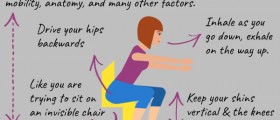

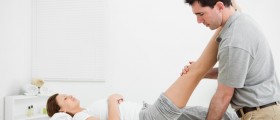
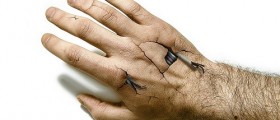



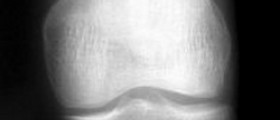
_f_280x120.jpg)

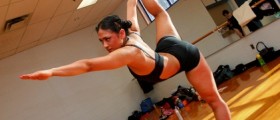
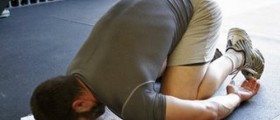
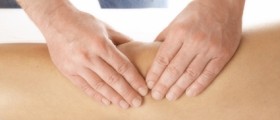


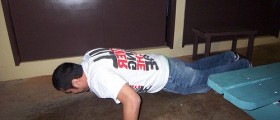
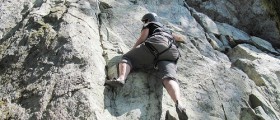

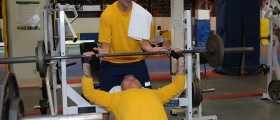


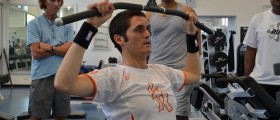

Your thoughts on this
Loading...